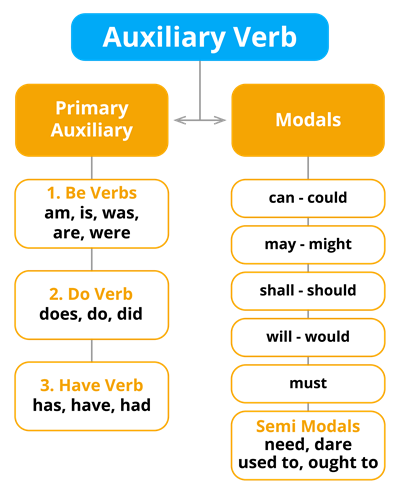PDF chapter test TRY NOW
A modal verb is used to indicate modality (that expresses a speaker’s general intention) i.e. likelihood, ability, permission, request, capacity, suggestions, order, obligation, advice etc. We use modals to show if we believe something is certain, probable or possible.
In order to know a what a modal verb is, one must understand the functionality of auxiliary verbs, as modal verbs are also called modal auxiliary verb.
An auxiliary verb is a combination of Primary auxiliary and the modals.

An Auxiliary verb is a helping verb used with a main verb to form a verb phrase. It indicates tense, mood, grammatical aspects of the main verb.
Three primary forms of primary auxiliary verbs are : "Be", "Have", "Do"
Example:
1. Yes, I have a pen.
2. I am speaking to you now.
3. No. I did not do that.
Modals are also known as modal auxiliary verb. Modal Verbs are verbs that help the main verb to express one of the following:
Ability
Possibility/probability
Instruction
Permission
Obligation
Requests
Offer
Advice
Some of the Primary auxiliary sentences from the lesson "His First Flight" are:
- He felt certain that his wings would never support him
- But for the life of him, he could not move.
- Surely he could reach them without flying if he could only move northwards
- He was not a fly. And above him, he could see nothing.
- He stood on one leg hoping he might draw some attention
- He knew for sure that he would fall
